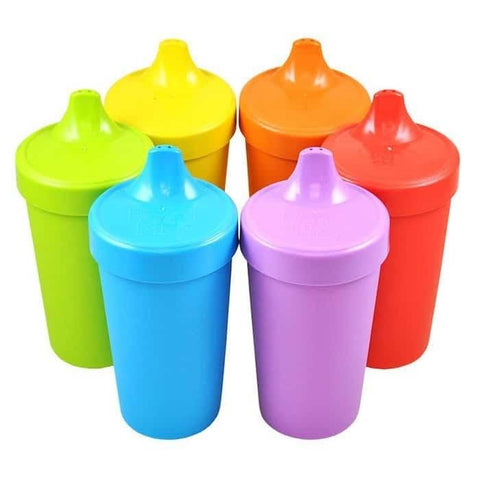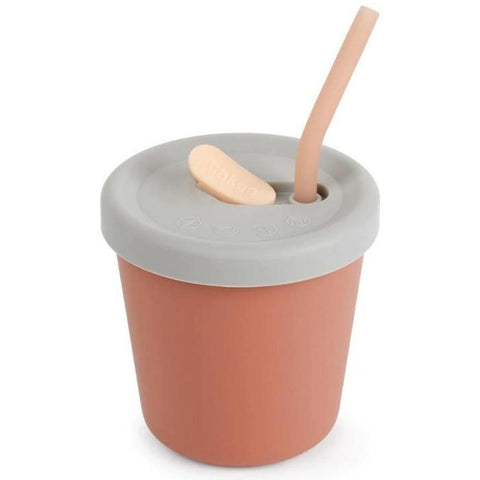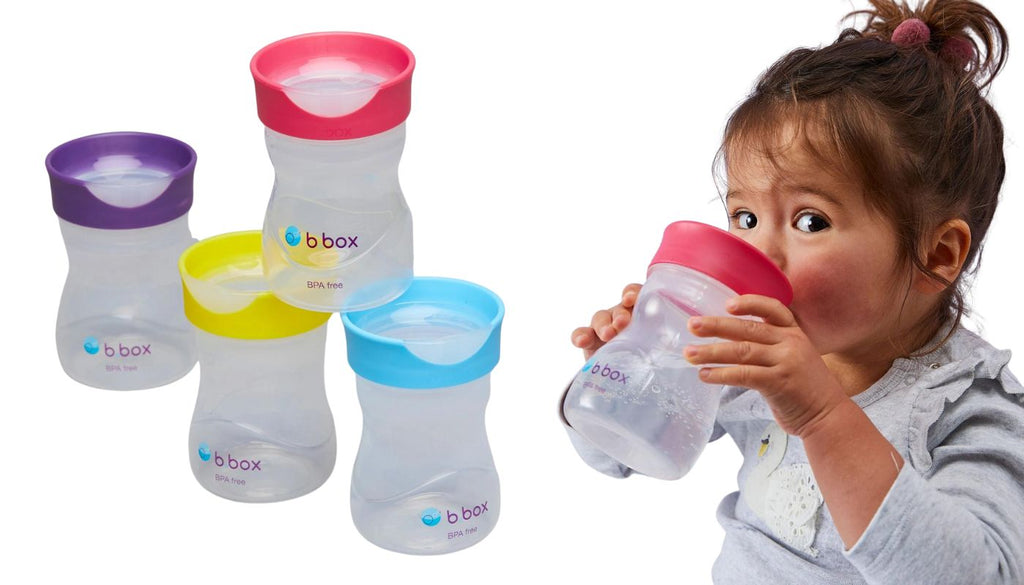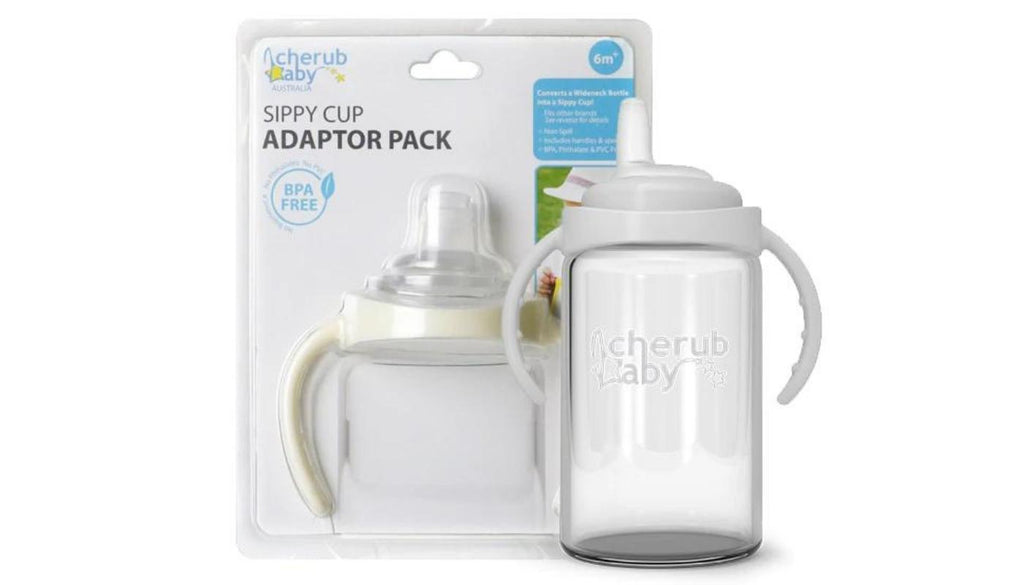
When should you start baby on a sippy cup?
Australian health authorities recommend that your baby should be using a cup by around 12 months. Using a bottle for too long can lead to problems such as tooth decay and infection. Also, by the age of 12 months, your baby should be getting most of their nutrition from solids. If your baby is having too much milk from a bottle, it can lead to poor nutrition, such as low iron. So how do you transition your baby to a cup or a sippy cup?
When is the best time to introduce a sippy cup?
At around 6 months, your baby is sitting up and being introduced to solids. This is an ideal time to introduce a sippy cup. Using a cup is an important skill for toddlers to learn. And it's a big step on the road to independence. However, not every baby will be ready to use a sippy cup at six months. Babies all develop differently. Some will pick up how to use the cup easily, other babies may need a little more time. This is completely natural. You just need to keep trying until baby feels that she's ready.
How do you introduce baby to a sippy cup?
Take it slowly. Your baby is used to drinking from the breast or a bottle, so it will take a little time to adjust to the sippy cup. Here are a few ideas on how to help your baby get used to the idea of the sippy cup:- Start by familiarising her with the sippy cup. Put a small amount of milk into the sippy cup and let her have a look at it and maybe even a play with it.
- Try holding the cup to your baby’s mouth and letting a little liquid trickle in.
- If you’ve chosen a sippy cup with a valve, it may be worth removing the valve the first couple of times so that your baby gets the idea that the liquid comes out of the spout.
- You can also try dipping the spout into some milk. The taste of the milk may help baby realise that there’s actually milk in the cup.
- Show baby how to do it. Put the sippy cup to your mouth and pretend to drink from it. Babies are natural mimics – she’ll soon get the hang of it!
- If she’s not sure, try a different sippy cup. Your baby may not like the spout you’ve chosen, or she may find it hard to suck from. Some babies learn to use a straw early on, so you could try her on that. You can even try her with a very small amount of liquid in a real cup.
- Your baby will only be able to drink a little from the cup at first. She’s used to drinking from the breast or a bottle where the milk comes out slowly, so she may only take a little liquid from the sippy cup. When she turns her head away or refuses the sippy cup, even if she hasn’t had any, put the cup away and try again at the next meal.
Use the sippy cup in moderation. Don't allow your baby to use it as a pacifier. Just offer your baby the sippy cup at mealtimes or when it’s likely that she’s thirsty. Take it away again when she's had enough to drink. This way, you can also ensure that your baby is getting the nutrition that they need from solids and milk, whether it’s breastmilk or formula. This is a good habit to get into with your toddler, too. Constant sipping on milk or juice, even diluted juice, allows natural sugars to stay in the mouth for longer and cause tooth decay.
Is it essential to use a sippy cup?
Absolutely not! Not all babies will take to a sippy cup. Also, it’s recommended that babies should stop using a sippy cup by the age of two. This is because the spout is very similar to a bottle, and if used for too long, may interfere with proper speech development. You may like to avoid the sippy cup altogether. Here’s some ideas for alternatives to sippy cups:- Straw cups, or a cup with a straw in it
- Small egg cup
- Shot glass
- Espresso cup
Which is the best first sippy cup for baby?
Unfortunately, there’s no definitive answer to this one – it depends entirely on your baby. Some babies are more bothered than others about what sort of bottle they like.
Bottles with learner handles
You can start off with a normal baby bottle, and attach learner handles to it. This helps baby adjust to drinking by themselves. The rest of the bottle is the same, so it’s an easy way to introduce your baby to the concept of drinking by themselves. However, as this type of bottle generally uses the same bottle teat, it doesn't always help to encourage baby away from the bottle and on to a sippy cup.
A better option is the Cherub Baby adaptor packs. You still use the same bottle, but you can either attach a sippy cup spout or a straw spout. Some babies prefer to start on a sippy cup with a silicone spout, as it’s soft and feels similar to a bottle teat in the mouth. These can be easier for babies as they don’t need to suck hard to get the milk out. Biting down will allow the liquid to flow out easily, but they are non drip when there’s no pressure. Sippy cups with silicone spouts can be a good first stage sippy cup, especially if your little one is used to holding a bottle. Your baby will quickly get the hang of the handles.
Trainer Cups
Other babies are quite happy to start off with a trainer cup with a harder spout. These can be especially good for babies who like to bite the spouts, as you'll need to replace these less often than the silicone spouts. The Re-Play sippy cups are recommended from around 9 months. You could also try the b.box silicone lid that turns most standard sized cups into a sippy or straw cup.

Straw Cups
You can try your baby with a straw cup. These are recommended from around 6 months. However, in my experience babies do better with straw cups when they're older than 6 months. My eldest son learnt to use a straw at around 11 months, my youngest took years to get the hang of straws! For younger babies, look for silicone straws, which are safe and soft in baby's mouth. The downside with these are that the straws are easy to chew, and may need to be replaced reasonably often.
Every baby is different, so you may want to try a straw cup early on and see how your baby goes with it. Also, it's recommended that toddlers transition to a straw cup by the time they are two years old, so do keep introducing a straw even if your baby doesn't seem to like it straight away.
 |
 |
All in One Toddler Cups
As your toddler gets more control over their movements, you can start moving them on to a cup. The b.box training cup is ideal for this. It's compatible with the b.box sippy cup and spout cups, so you can switch between them.
 |






